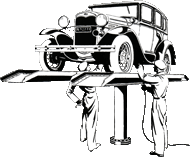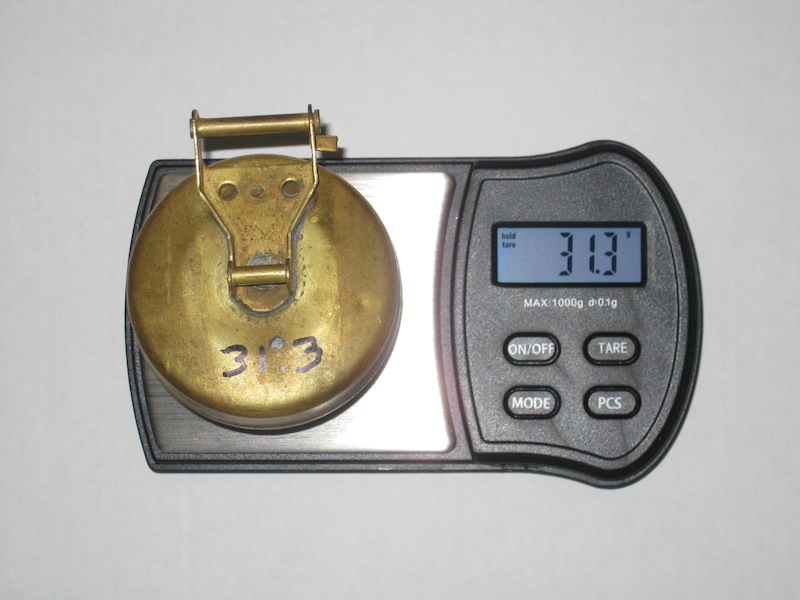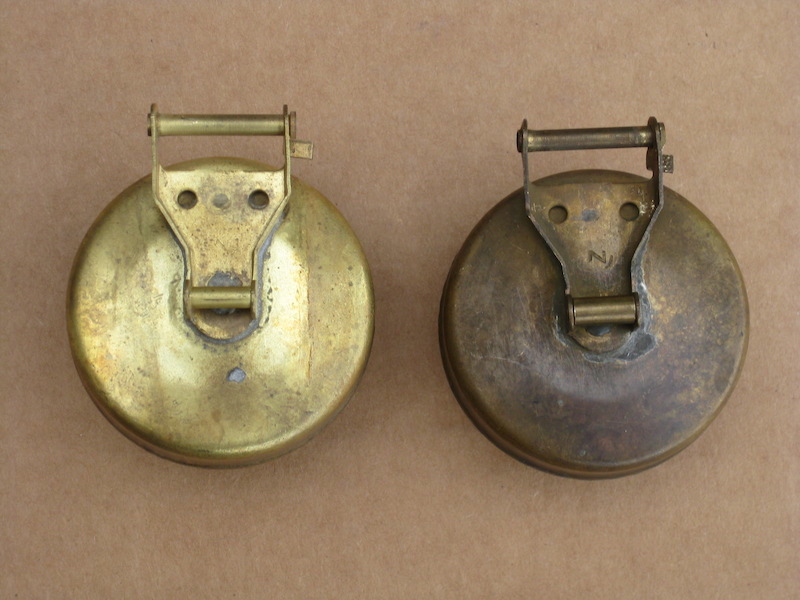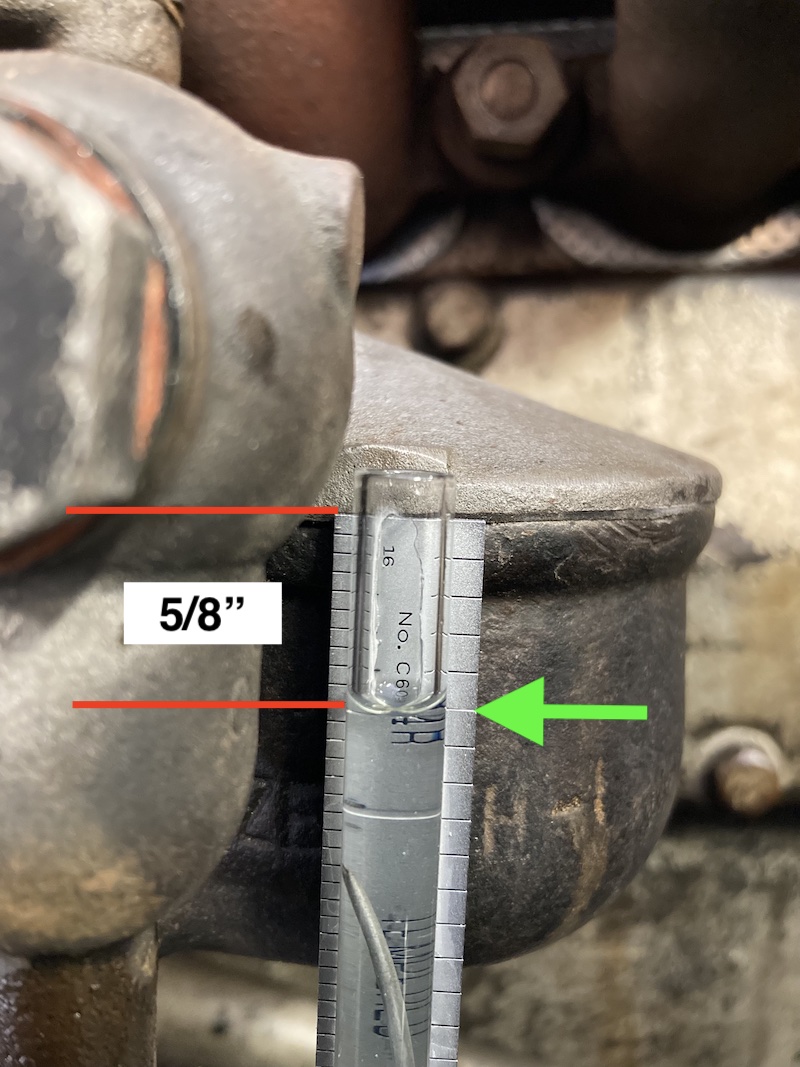
Model A
Ford Garage
Zenith Carburetor Float Mass and Performance Details

 fordgarage.com
fordgarage.comThe Zenith carburetor has a hinged and soldered brass pontoon float which raises and closes an inverted tapered needle fuel valve assembly, both of which are mounted to the upper carburetor casting. Fuel is fed by gravity flow into the fuel needle valve and float bowl.
It has been noted that the currently available imported reproduction floats are thinner and much lighter than originals. Generally the imports weigh in the neighborhood of 25 grams, rather than the 31-32 grams specified on the Ford detail drawing.
Luckily however, correct mass USA reproduction floats are also available.
The mass deficiency of the thinner brass imported float results in its relative reduction in buoyancy (and fuel displacement), and results in premature valve seating of the inverted needle.
This mass deficiency then results in a lower fuel level in the bowl, and adversely affects carburetor performance, compared to the correct higher fuel level established by a correct heavier mass float.
The fuel level in the float bowl was designed at 5/8" below the bowl gasket surface.
The designed float mass of 31-32 grams is necessary to achieve the designed 5/8" fuel level in the bowl.
If the fuel level in the bowl is too high, fuel can weep out the tops of the Main Jet and the Cap Jet.
If the fuel level in the bowl is too low, fuel starvation can occur.
An underweight float will displace less fuel mass and will ride dimensionally higher on the fuel surface, and will contact and shut off the fuel needle valve sooner than would a proper heavier weight float of the same geometry. The net result is a lower actual fuel level in the Float Bowl, which will also cause a corresponding lower fuel level in the Idle/Secondary Well.
A lowered fuel level in the Float Bowl and Idle/Secondary Well can have some serious adverse effects on normal carburetor operation.
Second, a lowered fuel level in the Float Bowl can also pose a risk to the Main Jet fuel supply at higher speeds and loads, suggesting additional use of the GAV (which will also be compromised or ineffective). You don't want to run out of power at speed, do you?
Additionally, during off-idle acceleration and open throttle operation, the brass Idle/Secondary Well maintains a partial fuel level available for use by the Idle Jet whenever the Throttle Plate is suddenly closed, or quickly returned to the idle stop position (during braking for example), and prevents stalling during the return-to-idle fuel circuit transition. You don't want to stall on braking, do you?
Based on the lower masses of the current imported reproduction floats, and armed with the original Ford float detail drawings, I weighed a sample of my original A-9550 float collection. This included 1 NOS Zenith float, 10 NOS Holley floats, and several unmolested and undamaged used Zenith and Holley floats.
The used floats were all in good dimensional condition, and also without any solder or leak repairs, or rattling inside from loose solder or retained liquids.
The drawing also notes that the Zenith part number of the float assembly was 30110.
The table below shows the results of those measurements using a digital gram scale.
| Model A Zenith Float A-9950 (Zenith 30110) |
Mass (grams) |
|---|---|
| A-9950 Drawing 11-13-30 | 31.0 - 32.0 |
| Holley NOS | 30.6 |
| Zenith used | 31.3 |
| Holley NOS | 31.3 |
| Holley NOS | 31.3 |
| Holley NOS | 31.4 |
| Holley NOS | 31.4 |
| Holley NOS | 31.4 |
| Holley used | 31.4 |
| Holley NOS | 31.5 |
| Zenith NOS | 31.5 |
| Zenith used | 31.6 |
| Holley NOS | 31.7 |
| Zenith used | 31.8 |
| Zenith used | 31.8 |
| Holley NOS | 31.8 |
| Holley NOS | 31.8 |
| Zenith used | 31.9 |
from the data above, it is noted that the Zenith floats measured were all within 0.6 grams of each other, and the NOS Holley floats were within a range of 1.2 grams. Only one of the floats measured out of spec, and only by 0.4 grams.
Notice in the pic below that the Zenith floats (used) have different diameter added adjustment weights (or none at all) 'riveted' above the center of the float in order to bring the total float mass into specification, per the Ford detail float assembly drawing.

 fordgarage.com
fordgarage.comMy particular NOS Zenith and Holley floats were all without added weights, but measured quite consistently and within drawing specification overall. I also have many used original floats with and without added float weights of various size.
| Model A Zenith Float Added Adjustment Weight |
Diameter (inches) |
|---|---|
| A-9599-A | 1/4 |
| A-9599-B | 7/32 |
| A-9599-C | 3/16 |
| A-9599-D | 9/64 |
The table above details the part number for the four different brass float adjustment weights used on some floats to bring them into mass spec. Interestingly, the original Ford detail drawing only specifies the dimensions and material of the added weights, but does not actually call out their masses.
The fuel level (not the float height) in the 1928-31 Model A Zenith carburetor float bowl was originally designed at 5/8" ± 1/32" below the fuel bowl gasket surface, per 1932 Ford Service Bulletins page 9, and 1934 Ford Service Bulletins page 227.


It should also be noted that the carburetor itself is horizontal in the vehicle-installed position, even though the engine is inclined at 3.25 degrees to horizontal. The intake manifold flange is opposite-angled 3.25 degrees to produce the horizontal mounting condition when the carburetor is installed on the engine.
Restorers should be aware that there are currently (2025) two different USA manufactured reproduction floats for the Model A Ford Zenith carburetor.
There also are imported (Taiwan) floats commonly sold on eBay, and they are not equivalent! In the past, there were also reproduction floats marked "Industria Argentina", and those are also not a correct reproduction.
Lower cost imported floats are still available, however they weigh only 25 grams, and also have an oversized float hinge pin tube ID. Two things you definitely don't want managing the fuel valve needle operation in your carburetor!
However:
Excellent quality USA reproduction floats from Snyders weigh 31-32 grams, which is correct to the Ford print, and also have the correct 0.095 - 0.096 inch ID float hinge pin tube. You get what you pay for!
More related information on Ford Garage:
- For more Model A & B related information, use the Site Search box at the top or bottom of this page.
- Model A Zenith Carburetor Theory of Operation
- Model A Zenith Carburetor Numbering
- Model A & B Carburetor Jet Sizes & Flow Rates
- Model A Zenith Carburetor A-9545 Secondary Well Variations
- Model A Zenith Carburetor GAV Wrench
- Model B Zenith Carburetor Float Mass and Performance Details
Vince Falter
December 2015

